Spring Clouds
On Tuesday and Wednesday last week the same cloud types were running across the sky - some were down near the horizon and closer to the earth, resting over the green-blue banks of hills of the national park side of the estuary – some were way up high and looked like the feathers from a bird or the flicking tail of a horse. Others were between these two – small white puffy clouds that were thin in places, while a fourth kind was even higher still than the winged feather clouds, and dotted a little bit, even though small puffs too.
These clouds spoke of rain close to the earth, they told of fast winds higher up in the sky, and, in those that travelled close over our hill and my head, they spoke of moisture gathering in the air and running alike American Indian smoke messages, of rain to the eastern sea.
These clouds made me wonder – do these clouds come during this change of Seasons time, as Winter becomes Spring? Or do these types of clouds happen in every other Season too?
And what are these different kinds of clouds, all in the same sky at the same time?
They reminded me of songs about clouds – some associating them solely with storms, with laments, with floods. But clouds are also a sign of fruitfulness, of joy and plenty as without the rain there would be no food, no trees, no bees, no birds, no rivers, no streams and creeks, no us.
They reminded me of the tinkling sound Spring rains can make, like a million tiny tiny bells sparkling back with the also glittering and sparkling million wet eucalyptus leaves just after it rains and the sun bursts out again.
Spring is the time of year when many things change—including the weather. Temperatures can swing back and forth between balmy and frigid. Sunny days may be followed by a week of stormy weather. Sometimes extreme weather changes can occur even within the same day.
Apparently Cumulonimbus clouds form in unstable, moist atmospheres and are common in Spring and Summer.
The NSW SES tells us:
Although severe thunderstorms can occur at any time, the distribution of events by season shows a definite pattern. There is a marked tendency for severe thunderstorms (indeed all thunderstorms) to occur during the months from October through to March. This period is normally referred to as the ‘Severe Thunderstorm Season’ in New South Wales. The increase in storm frequency during this period is primarily due to the increase in energy provided by the sun during the warmer spring and summer months, coupled with spring and summer weather patterns that are favourable for storm growth.
The Australian Bureau of Meteorology tells us there are 10 main types of cloud which are further divided into 27 sub-types according to their height shape, colour and associated weather, Clouds are categorised as low (from the earth's surface to 2.5 km), middle (2.5 to 6 km), or high (above 6 km). They are given Latin names which describe their characteristics, e.g. cirrus (a hair), cumulus (a heap), stratus (a layer) and nimbus (rain-bearing). Clouds generally look white with some clouds appearing to be grey or dark grey according to their depth and shading from higher cloud.
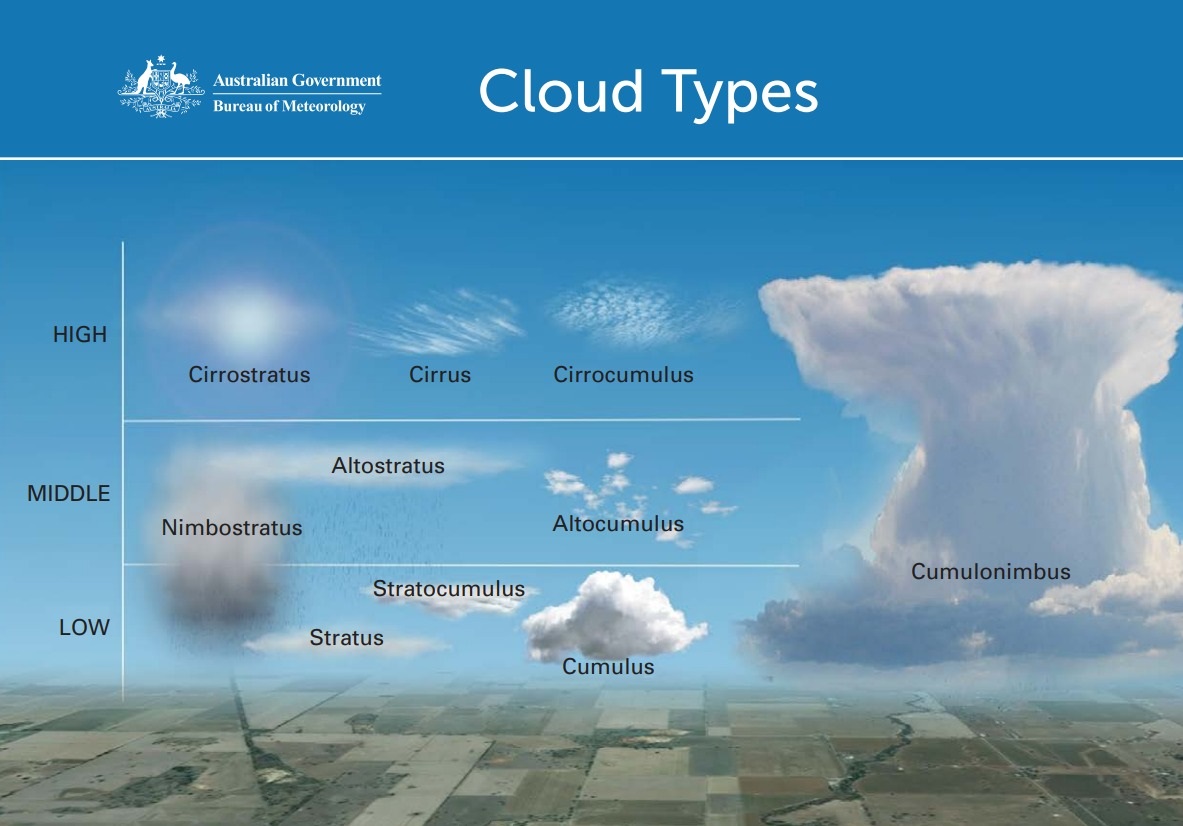
The 10 cloud types are known as stratiform and are classified as:
• Stratus (St) – found in the low levels of the atmosphere, tend to produce a light drizzle.
• Altostratus (As) – (‘alto’ meaning high), found in the middle level, tend to be very good rain producing system for large areas across Australia, particularly inland.
• Nimbostratus (Ns) – formed when altostratus undergoes further vertical development, allowing the cloud to hold more moisture, and causing the cloud base to lower and produce heavier rainfall; also appears darker in colour.
• Cirrostratus (Cs) – found in the higher levels of the atmosphere, white and wispy, and made of ice crystals. We often get a lot of halo activity with cirrostratus cloud, with the ice crystals refracting light around the moon and the sun.
The clumpy cloud, when in the lower part of the atmosphere, is classified as cumulus cloud:
• Cumulus (Cu) – low level cloud which tends to produce short duration, fairly intense rainfall that is often very localised, meaning that rain falling at your house might not be falling a kilometre up the road.
• Stratocumulus (Sc) – found in the lower levels, a blend between stratiform and cumuliform cloud and taking on appearances from both these cloud types, may produce drizzle.
• Altocumulus (Ac) – found in the middle levels, looks like sheep in the sky, may produce light showers.
• Cirrocumulus (Cc) – small, rippled, higher level cloud, does not produce precipitation.
• Cumulonimbus (Cb) – the largest cloud of all, forms in the lower layer of the atmosphere but extends through all three layers right to the top of the atmosphere. Also known as thunderstorm cloud, producing thunder and lightning.
Some of the more visually spectacular cloud happens very high up in the atmosphere, and is classified as cirrus cloud:
• Cirrus (Ci) – formed of ice crystals moving very quickly through the atmosphere, occurring at temperatures around -40°C to -60°C, does not produce precipitation (rain).
I took some photos too - which types of clouds, all in the same sky at the same moment, have I photographed here?
Here are some others taken over the years:
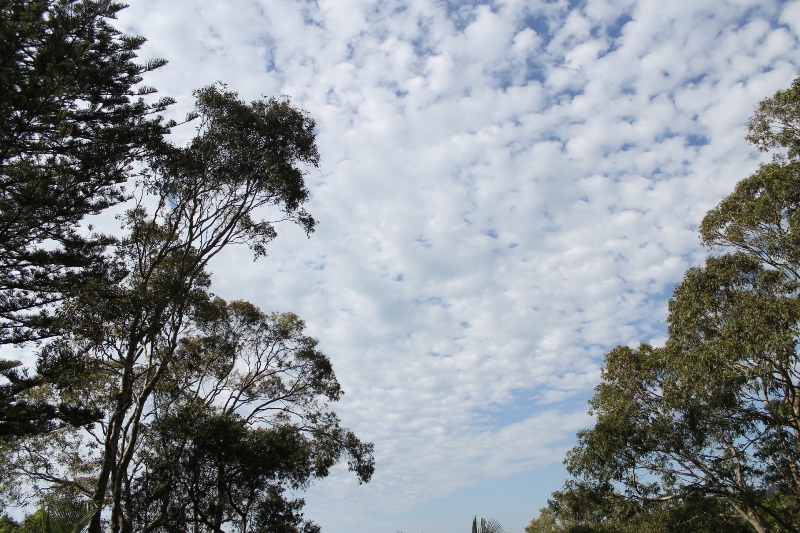
Cirrocumulus clouds over Careel Bay playing fields - and more of them over Mona Vale Village Park:
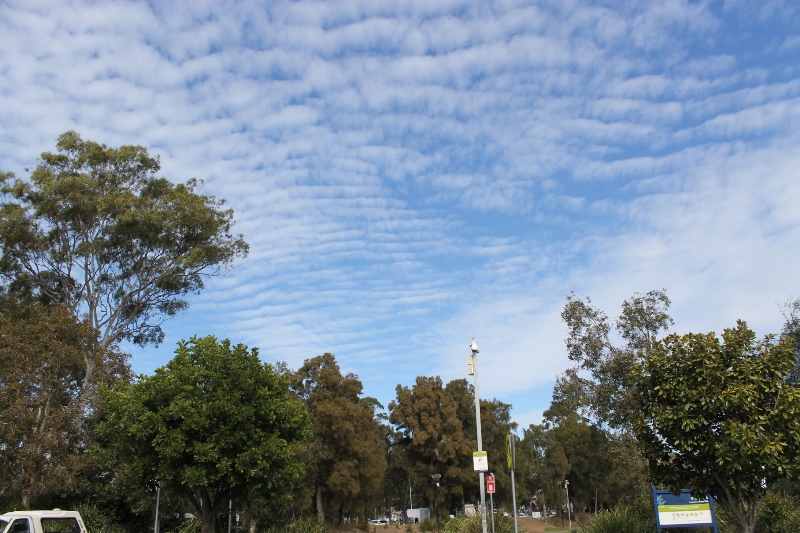

Cirrostratus clouds over Avalon Beach
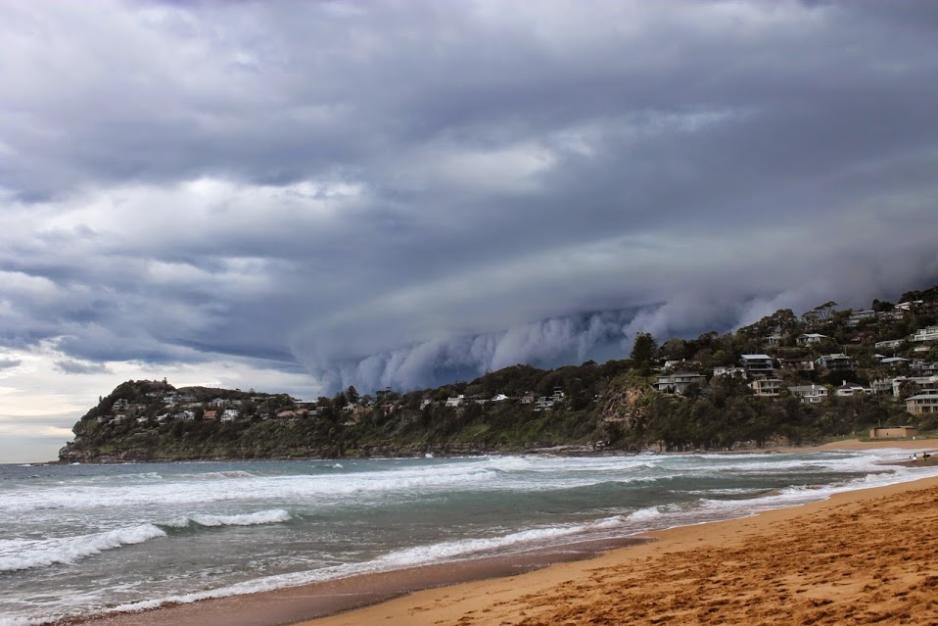
Storm front of clouds over Whale Beach - this was taken during one of BL's Blast Off events, held during the Spring School Holidays. We all ran to the surf club for shelter! This storm quickly passed out to sea though, and those youngsters in that year's BL's Blast Off soon were back in the watre surfing.
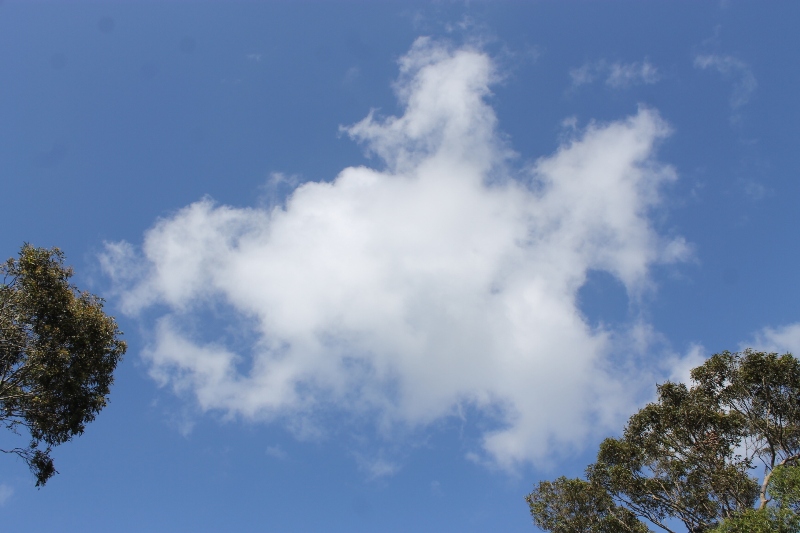
Cumulus Cloud
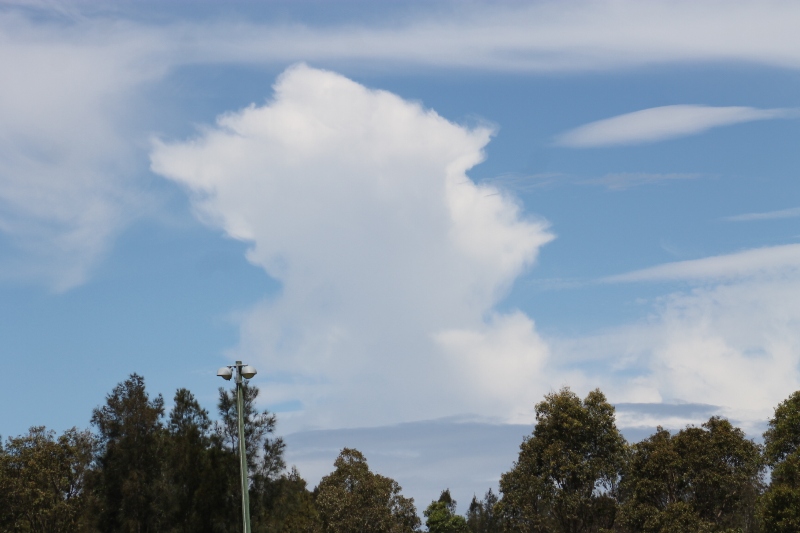
Cumulonimbus cloud

Cirrus Clouds over Pittwater
One of the L:ittle Corellas that lives in the trees around our place wondering 'what is she doing?' while I was taking some photos of the clouds for you
A few 'cloud' songs for you: